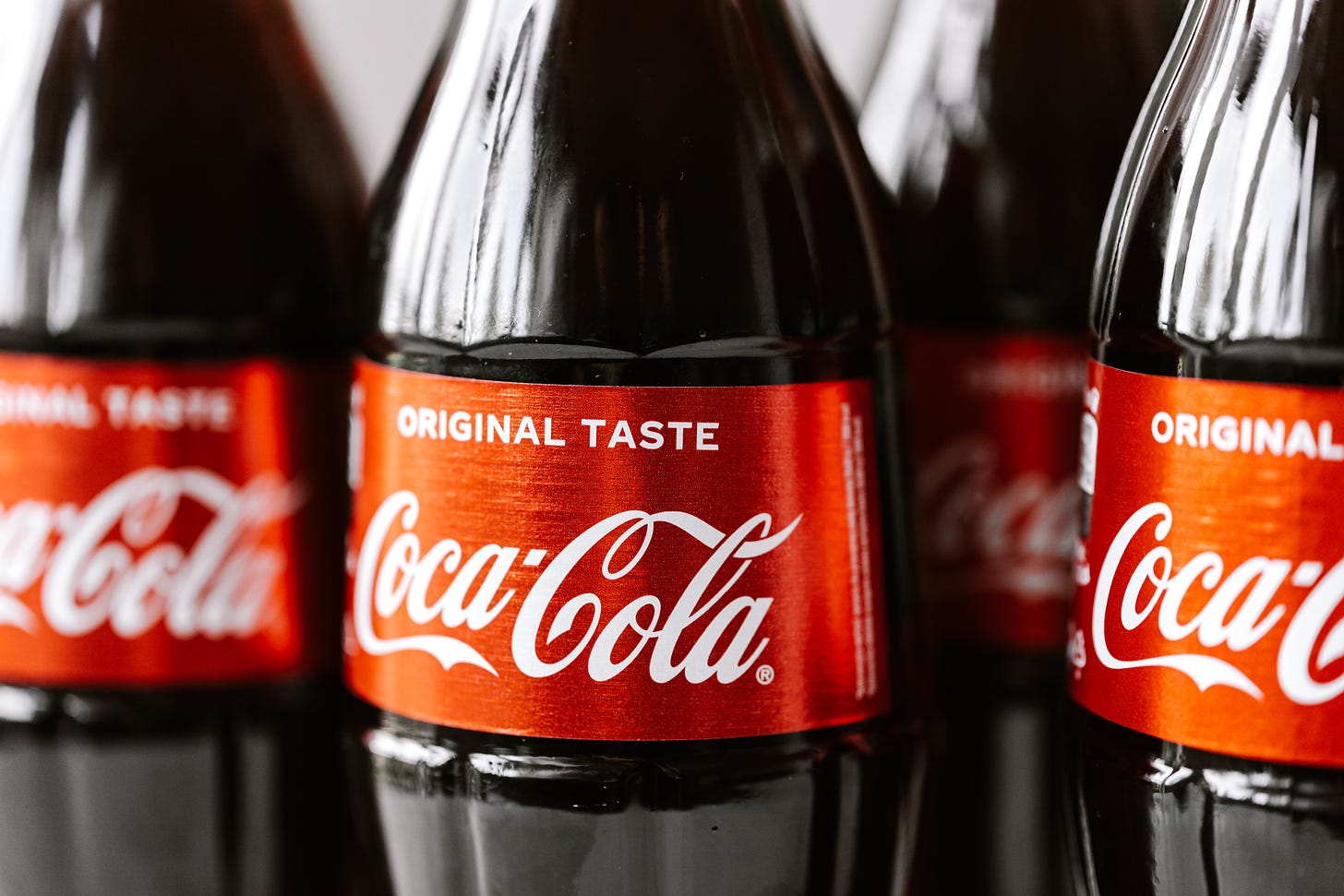Puffin Books, Roald Dahl and New Coke
In July 1985, Old Uncompetitive Coke was reintroduced as Coca-Cola Classic. Could thirsty consumers even manage the appearance of two Coke products simultaneously? It was anyone’s guess.
Photo: Karolina Grabowska, Pexels
Gather round, kids, while I recount a tale from the before times that’s sure to chill you to the marrow of your bones.
It was dark and stormy night in April, 1985, when the Coca-Cola company introduced a strange and magical elixir called New Coke. A rival company selling a rival concoction had claimed that, in blind taste tests, the Old Coke was old news and getting older by the day. Whence came the riposte—Old Coke would be replaced by New Coke, which was based on a New Recipe and even came in a New Can.
New Coke was popular for a while, then it wasn’t. “I hate this New Coke,” people said. “I wouldn’t let my dog drink it.” And to judge from sales numbers, they meant it, they really meant it.
What to do? Think outside the can, obviously. Improvise.
In July 1985, Old Uncompetitive Coke was reintroduced as Coca-Cola Classic, taking its place alongside New Coke in drugstore coolers everywhere. Marketing whizzes held their breaths, marvelling at the sheer audacity of the maneuver. Could thirsty consumers even manage the appearance of two Coke products simultaneously? It was anyone’s guess.
It turned out that they could. Shockwaves reverberated hither and thither down Madison Avenue. There was endless chatter about the New Savvy of the New Consumer. And before the end of that fateful year 1985, the Cokes—if I may avail myself of the plural without exciting confusion—were outselling their upstart rivals at levels that made it seem obvious to any thirsty eight-year-old that a New World of consumer choice had dawned.
Now, kids, you’ll all have heard about this Puffin-Books-rewriting-Roald-Dahl business, since you were raised on Mr. Dahl’s infamous scribbles and, in the insidious fashion of all books, they made you the persons you are today. So kids—this is where you want to pay close attention—believe me when I tell you that there are indeed dark, malevolent forces at work here, too, but not the ones you might imagine.
In mid-February last, it was discovered that Puffin had allowed the “language” of the late Mr. Dahl’s work to be “reviewed” to “ensure that it can continue to be enjoyed by all today.” And less than two weeks later—at the very moment the world’s readers had begun soberly and thoughtfully disentangling the vexing riddle of why anyone in their right mind would want to impede the “continued enjoyment” of Dahl’s work—Puffin announced that it would be releasing an uncensored selection of his books as “The Roald Dahl Classic Collection.”
Kids, I hope you can connect the dots here and draw some important life lessons, the most timely of which is that, when it comes to consumer choice and corporate responsibility, things are never quite what they seem. Sometimes there really are happy endings.
Meantime, I don’t know about you, but the next time I’m in a bookstore, I’m going to strike back at Puffin and buy both collections of Mr. Dahl’s books. That’ll teach them.




